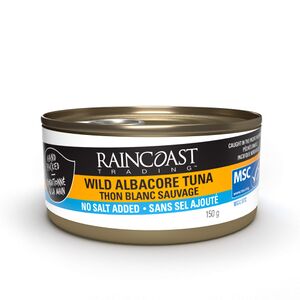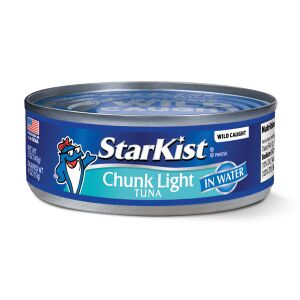Course:FNH200/Projects/2023/Comparing and Contrast on the Safety regulations between Canada and United States on Canned Tuna
Introduction
Canned tuna has long been a convenient and affordable source of protein. However, beyond its nutritional benefits, concerns surrounding the safety of canned tuna have garnered increased attention, prompting a closer examination of how this popular seafood is regulated, processed, and monitored. As consumers become more conscious of the potential health risks associated with seafood consumption, particularly due to elevated mercury levels, the need to comprehend the variations in safety regulations and processing techniques between countries becomes paramount. This WIKI page focuses on canned tuna production in two North American nations: Canada and the United States. By comparing and contrasting these aspects we can gain insights into the strategies each country employs to ensure the quality and safety of canned tuna products while navigating the intricate balance between providing a valuable food source and minimizing the health risks. Moreover, it is interesting to explore into canned tuna processing in America because the United States is the largest consumer of canned tuna, thus it is essential to understand why tuna is really popular amongst Americans (National Fisheries Institute, 2023). Mercury is also another important component that needs to be studied, for example which guidelines either Canada or United States follow to control and mange mercury levels in canned tuna fish.
Impact of Mercury on Children, Elderly, and Pregnant Women
Mercury consumption has raised significant concerns due to its effects on vulnerable groups including children, the elderly, and pregnant women. This is because mercury is a toxic heavy metal that can be found in fish and tuna. In children, mercury exposure can lead to impaired neurological development and cognitive or behavioral issues (Bose-O' Reilly et al., 2011). In the elderly, consumption of mercury can impair organ function and slow down metabolic rates (Lee et al., 2017). Lastly, pregnant women are a high risk group due to mercury's ability to cross the placenta and affect the developing fetus. This lead to developmental delays, learning and physical disabilities (Bose-O' Reilly et al., 2011). Given the seriousness of these concerns guidelines have been established to advise the consumption of low-mercury fish and reduction of exposure to mercury containing products.
Nutritional Intake for Canned Tuna (Canada)
There has been no advice given on canned albacore tuna consumption for the population in general (Canada, Government of Canada 2019). It may be an alternative to increase the amount of protein in their diet to find canned tuna since it is a convenient and inexpensive source of protein (Canada, Government of Canada 2019). An adult member of the "population in general" could eat up to six 170-g cans of canned albacore tuna (Canada, Government of Canada 2019). Additionally, eating canned light tuna that is fully cooked, such as albacore tuna, and yellowfin tuna are safe and beneficial for pregnant women because it is a good source of omega-3 fatty acids (Cinelli, Can I eat tuna while pregnant? 2022). As stated in Lesson Seven, if canned tuna is not fully cooked, there will be a high chance of contracting Listeria, a foodborne illness that can be found at storage of food at freezing temperatures. Canned tuna, especially canned light tuna, is one of the most popular types of fish for many Canadians. The fish used in canned tuna products are generally younger and smaller and have significantly less mercury than fresh or frozen tuna, so that most Canadians don't need to be concerned about consuming canned tuna (Canada, Government of Canada 2019). However, for those who consume large amounts of canned albacore tuna, there is some potential for exposure to higher levels of mercury than is considered acceptable (Canada, Government of Canada 2019).
Mercury Level (Canada)
All canned tuna, including albacore, is typically below the Canadian standard of 0.5 ppm total mercury (Canada, Government of Canada 2019). Mercury is found throughout the ocean, and is present to some degree in every kind of fish you could choose to consume. It’s both an element found naturally in the environment and a byproduct of manmade pollution (Kirchner & Bergmann, How worried should you be about Mercury in your tuna? 2023). In high amounts it can even be harmful to adults, causing problems with fine motor coordination, speech, sleep, and walking, and prickly sensations Kirchner & Bergmann, How worried should you be about Mercury in your tuna? 2023). A wide range of adverse health effects have been observed in humans following methylmercury exposure, the severity largely depending on the magnitude of the dose and the duration of exposure (Canada, Government of Canada 2019). The Canadian Food Inspection Agency (CFIA) conducts routine monitoring of the mercury levels in numerous fish species at fish processing plants before the fish travel to commercial markets (Canada, Government of Canada 2019). If a fish contains higher mercury levels than what the Canadian standards permit, more testing is done on fish from the same lot or batch (Canada, Government of Canada 2019). Canned Tuna may raise a concern for young children since their nervous system, brain, heart, kidneys and lungs are all susceptible to the harmful effects of mercury (Mercury in tuna: Is canned tuna safe?).
Production of Canned Tuna (Canada)
Forms of Production Presentation includes Styles of Pack which consist of solid, chunk or chunks, flake, flaked or flakes, and grated or shredded (Government of Canada, 2018). Chunk and solid tuna are different due to the sizes of the pieces of the fish inside the can. Chunk tuna is broken up into small flakes before canning, while solid tuna is packed in large, intact filets (COSMermaid, How to choose a can of tuna). The Fish Flesh colour such as white meat tuna, light meat tuna, and dark meat tuna, which is canned tuna that does not meet the colour requirements of Light Meat Tuna (Government of Canada, 2018). When being packed, they are packed in either olive oils, other vegetable oils which are refined edible vegetable oil, in potable water, spring/mineral water, or in vegetable broth (Government of Canada, 2018). In Lesson One, we have learned that seafood products are harvested and processed primarily in Atlantic Canada and in British Columbia. Seafood production includes the harvesting of wild stocks as well as production of salmon, oysters, clams and lobsters, under intensive production systems
Preservatives (Canada)
Canned Tuna contains ascorbic Acid, Calcium Ascorbate, sodium ascorbate which are found in Part 1 - Class 1 Preservatives (Canada, Government of Canada 2022). Canned or tinned seafood is fish that have been cooked in a hermetically sealed can and subjected to a high heat thermal process to achieve commercially sterile foods. This method preserves the food and provides a typical shelf life ranging from two to five years (How is canned seafood made? no preservatives needed! n.d).
Nutritional Intake for Canned Tuna (USA)
The US Food and Drug Administration (FDA) and the Environmental Protection Agency (EPA) have issued guidelines that suggest consuming canned tuna in moderation. For adults, it is recommended to limit consumption to 12 ounces (340 grams) of canned tuna or 6 ounces (170 grams) of canned albacore tuna per week (FDA, n.d & Dietary Guidelines for Americans, n.d). In general it is recommended to limit tuna consumption to 2 to 3 servings per week (FDA, n.d). This ensures individuals can enjoy the benefits of canned tuna while minimizing the exposure to harmful mercury levels.
Mercury Level (USA)
The United States is a larger consumer of canned tuna compared to Canada (Tuna Facts, n.d.). Yet, canned tuna in the US has been proven to be safe by the Food and Drug Administration following concerns regarding the mercury levels in canned tuna. According to the FDA the average amount of mercury in light canned tuna is at 0.12 parts per million (ppm) which is eight times less than the FDA limit for commercial fish (FDA, n.d). Moreover light canned tuna has the least amount of mercury levels (0.12 ppm) when compared to other types of canned tuna such as yellowfin (0.33 ppm) (FDA, n.d).
Source (USA)
The harvested tuna is mainly found in tropical and warm temperate waters of the Pacific, Atlantic, and Indian Oceans. United States’ tuna is caught from Washington, California, Hawaii, American Samoa, and on the high seas. However, a portion of tuna is delivered from foreign fishing companies (NOAA Fisheries n.d.).
Canned tuna processing, production (USA)
In order to maintain its quality tuna is delivered in frozen form and it is immediately moved into cold storage centers. After unloading, different tunas are organized based on weight and size and the inspection team rates the condition and quality of tuna. The next step is that the frozen tuna is thawed by transferring them into thawing tanks, furthermore, the tuna is placed on metal racks and are placed in pressure-cooking chambers. The baking time and temperature depends on the size of the fish. The purpose of baking is to remove excess oil and allow the skin and bone removal to be easier (bumblebee n.d.).After baking the cooling process begins in which the tuna is moved to a temperature-controlled room, and then the cleaning process takes place where the bones and skin are removed. Cans are filled with tuna, and accurate measures of salt, water or oil are added, Lids are then automatically clinched on the top of the can before entering the vacuum sealer, where the air is withdrawn and the lid hermetically sealed. Afterwards a water bath is required to remove oil residues. Once again the cans require baking in a specific temperature and are cooled immediately after. Labels are placed on the cans and after the packaging the quality control crew grades the samples of tuna fish based on a specific criteria which is based on vacuum, appearance, smell, texture, style of pack, cleanliness, and flavor (bumblebee n.d.).
Preservatives (USA)
In the production process of canned tuna, the tuna is heated under pressure all the microorganisms which can lead to disease are killed, therefore preservatives are not required (4 common myths about canned seafood debunked n.d)
Potential Exam Question
1) Which of the statements below is accurate?
- Vitamin A is fat soluble (ANSWER)
- Vitamin C is sensitive to oxidation during processing and storage
- Vitamin A is water soluble
- Vitamin C is fat soluble
Vitamins are crucial for maintaining good health. Since we get most of our vitamins through food, it is important to understand how vitamins support our growth and immune function to make informed choices about our diet. This topic relates to lesson 11.
2) Describe how heat is transferred in a can of tuna?
- Conduction
- Convection
- Mainly conduction; some convection (ANSWER) - some solids some liquids
- Mainly convection; some conduction
This is what we learned from our team assignment and heat transfer in a can of tuna relates to lesson 6. It’s important to learn about the sterilization of canned products so consumers won’t be sick.
References
Canada, H. (2019, November 27). Government of Canada. Canada.ca.
https://www.canada.ca/en/health-canada/services/food-nutrition/foodsafety/chemical-contaminants/environmental-contaminants/mercury/mercury-fish-questionsanswers.html#ct1
Canada, H. (2019, November 27). Government of Canada. Canada.ca. https://www.canada.ca/en/health-canada/services/food-nutrition/food-safety/chemical-contaminants/environmental-contaminants/mercury/mercury-fish.html
Canada, H. (2022, August 26). Government of Canada. Canada.ca. https://www.canada.ca/en/health-canada/services/food-nutrition/food-safety/food-additives/lists-permitted/11-preservatives.html
Government of Canada, C. F. I. A. (2018, June 13). Government of Canada. Chapter 2 - Archived - Standards and Methods Manual - Food safety for industry - Canadian Food Inspection Agency. https://inspection.canada.ca/food-safety-for-industry/archived-food-guidance/fish-and-seafood/manuals/standards-and-methods/eng/1348608971859/1348609209602?chap=5#s5c5
Cinelli, E. (2022, December 5). Can I eat tuna while pregnant?. Verywell Family. https://www.verywellfamily.com/can-pregnant-women-eat-tuna-5195402#:~:text=If%20you%20enjoy%20eating%20tuna,mercury%20contamination%20is%20not%20recommended.
COSMermaid. (n.d.). How to choose a can of tuna. Chicken of the Sea. https://chickenofthesea.com/fresh-ideas/how-to-choose-a-can-of-tuna/#:~:text=Once%20you’ve%20figured%20out,Simple%20enough.
How is canned seafood made? no preservatives needed!. Clover Leaf. (n.d.). https://www.cloverleaf.ca/en/nutrition-and-inspiration/nutrition/how-is-canned-seafood-made-no-preservatives-needed/#:~:text=Canned%20or%20tinned%20seafood%20is,from%20two%20to%20five%20years.
Fisheries, N. (2023, May 18). Pacific Albacore Tuna | NOAA Fisheries. NOAA. Retrieved August 6, 2023, from https://www.fisheries.noaa.gov/species/pacific-albacore-tuna#seafood
Kirchner, L., & Bergmann, D. visualizations by A. (2023, February 9). How worried should you be about Mercury in your tuna?. Consumer Reports. https://www.consumerreports.org/health/food-safety/how-worried-should-you-be-about-mercury-in-your-tuna-a5041903086/#:~:text=In%20high%20amounts%20it%20can,vulnerable%20to%20mercury%2C%20Rogers%20says.
Mercury in tuna: Is canned tuna safe?. Environmental Defense Fund. (n.d.). https://www.edf.org/oceans/mercury-alert-canned-tuna-safe#:~:text=Canned%20white%2C%20or%20albacore%20(0.32,%2C%208%2Dounce%20portions).
bumblebee. (n.d.). Tuna Processing. Bumble Bee Seafood. Retrieved August 6, 2023, from https://www.bumblebee.com/seafood-school/tuna-101/tuna-processing/
safcol. (2021, January 26). 4 common myths about canned seafood debunked - Ashleigh Feltham. Seafood Experts. Retrieved August 6, 2023, from https://www.seafoodexperts.com.au/4-common-myths-about-canned-seafood-debunked/
Dietary Guidelines for Americans. (n.d.) DietraryGuidelines.gov. Retrieved August 7, 2023 from https://www.dietaryguidelines.gov/
U.S Food and Drug Administrtation (FDA). (n.d.). Advice about Eating Fish. Retrieved August 7, 2023, from https://www.fda.gov/food/consumers/advice-about-eating-fish
About Seafood. (n.d.). Tuna Facts. Tuna Council. https://aboutseafood.com/tuna-council-3/tuna-facts/
Lee, MR., Lim, YH., Lee, BE. et al. Blood mercury concentrations are associated with decline in liver function in an elderly population: a panel study. Environ Health 16, 17 (2017). https://doi.org/10.1186/s12940-017-0228-2
Bose-O'Reilly, S., McCarty, K. M., Steckling, N., & Lettmeier, B. (2010). Mercury exposure and children's health. Current problems in pediatric and adolescent health care, 40(8), 186–215. https://doi.org/10.1016/j.cppeds.2010.07.002
National Fisheries Institute (NFI) presents AboutSeafood.com. (n.d.). About Seafood. https://aboutseafood.com/





